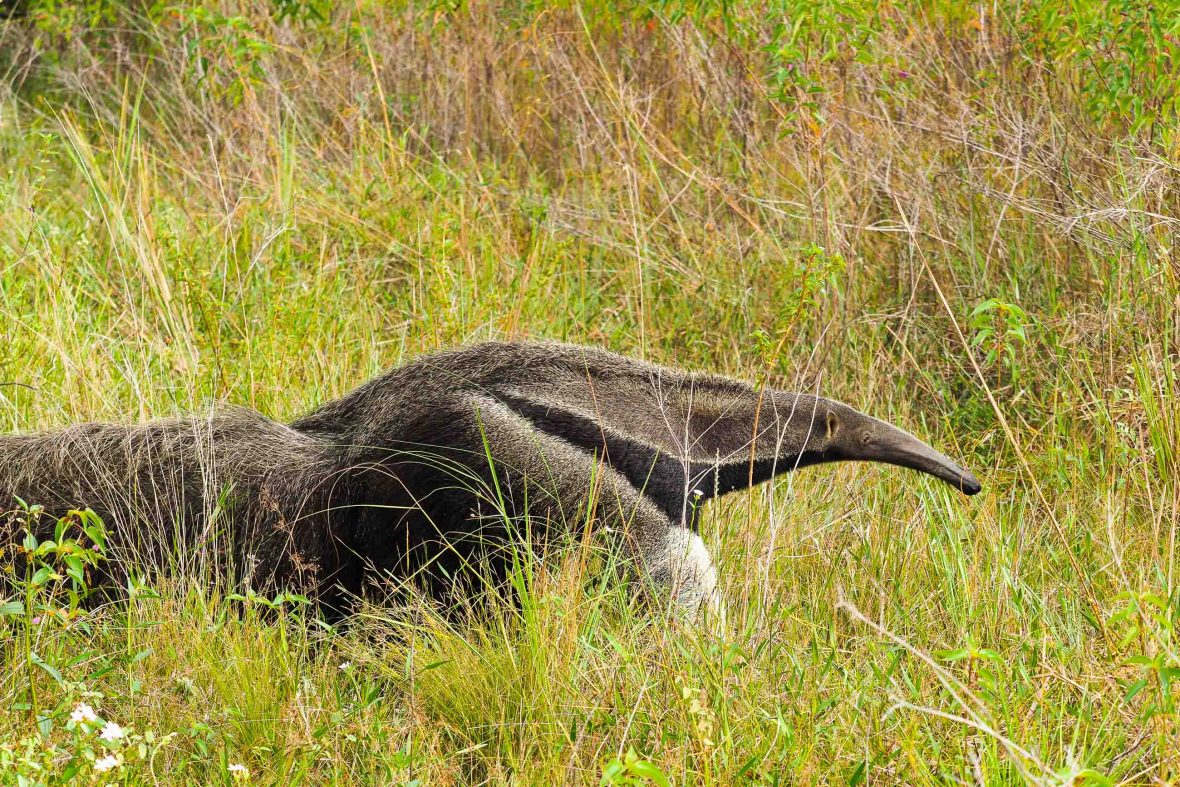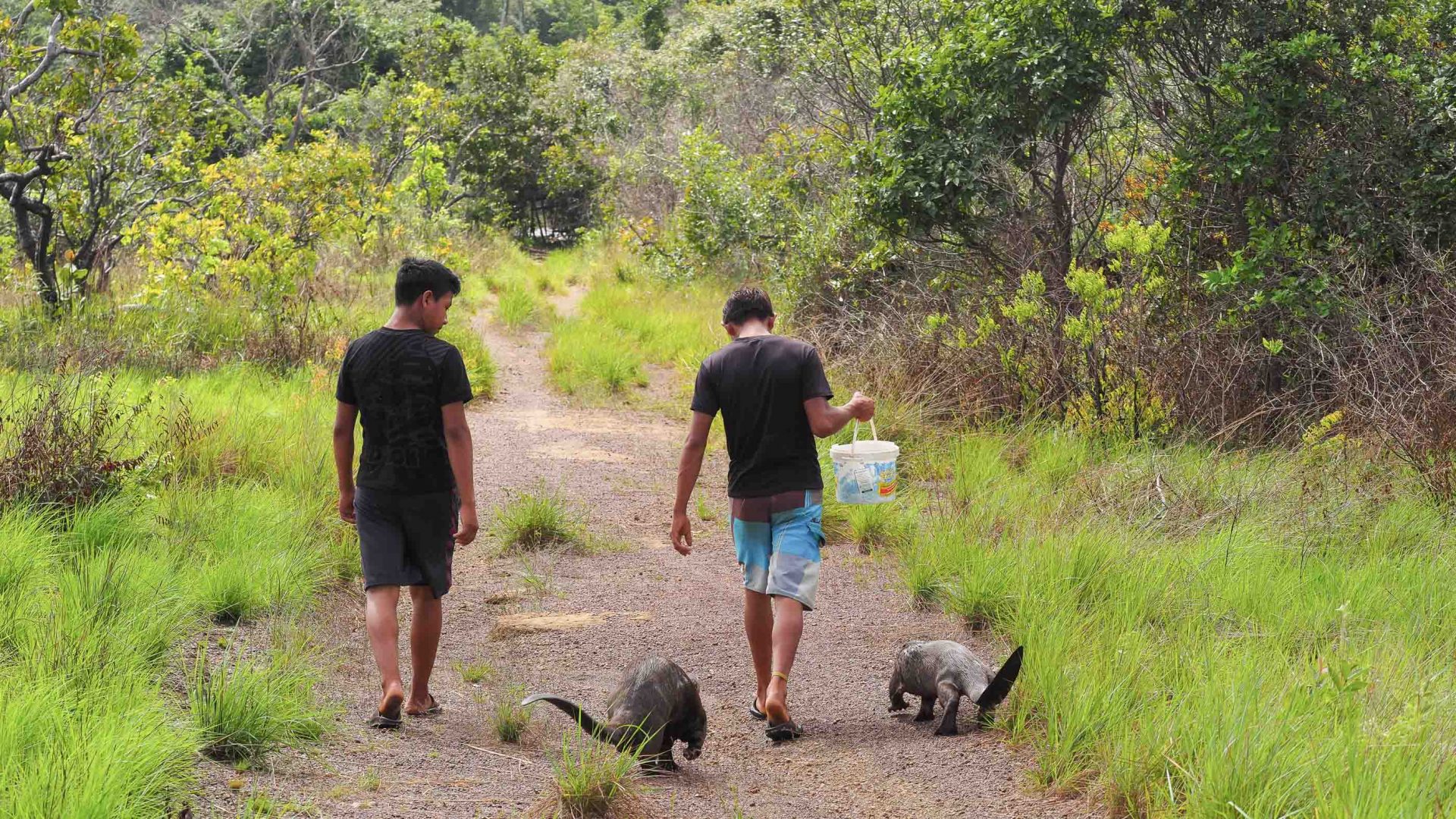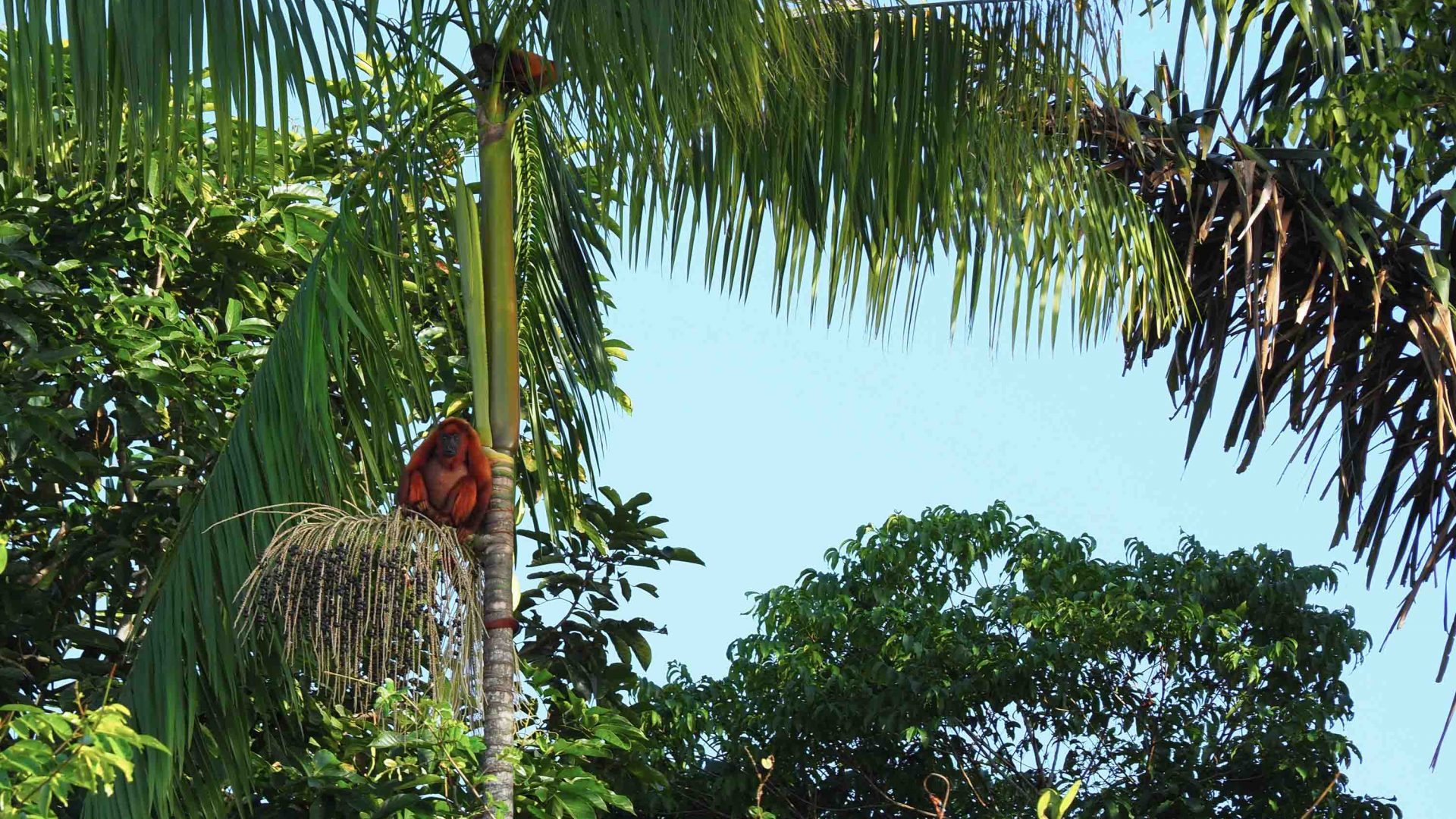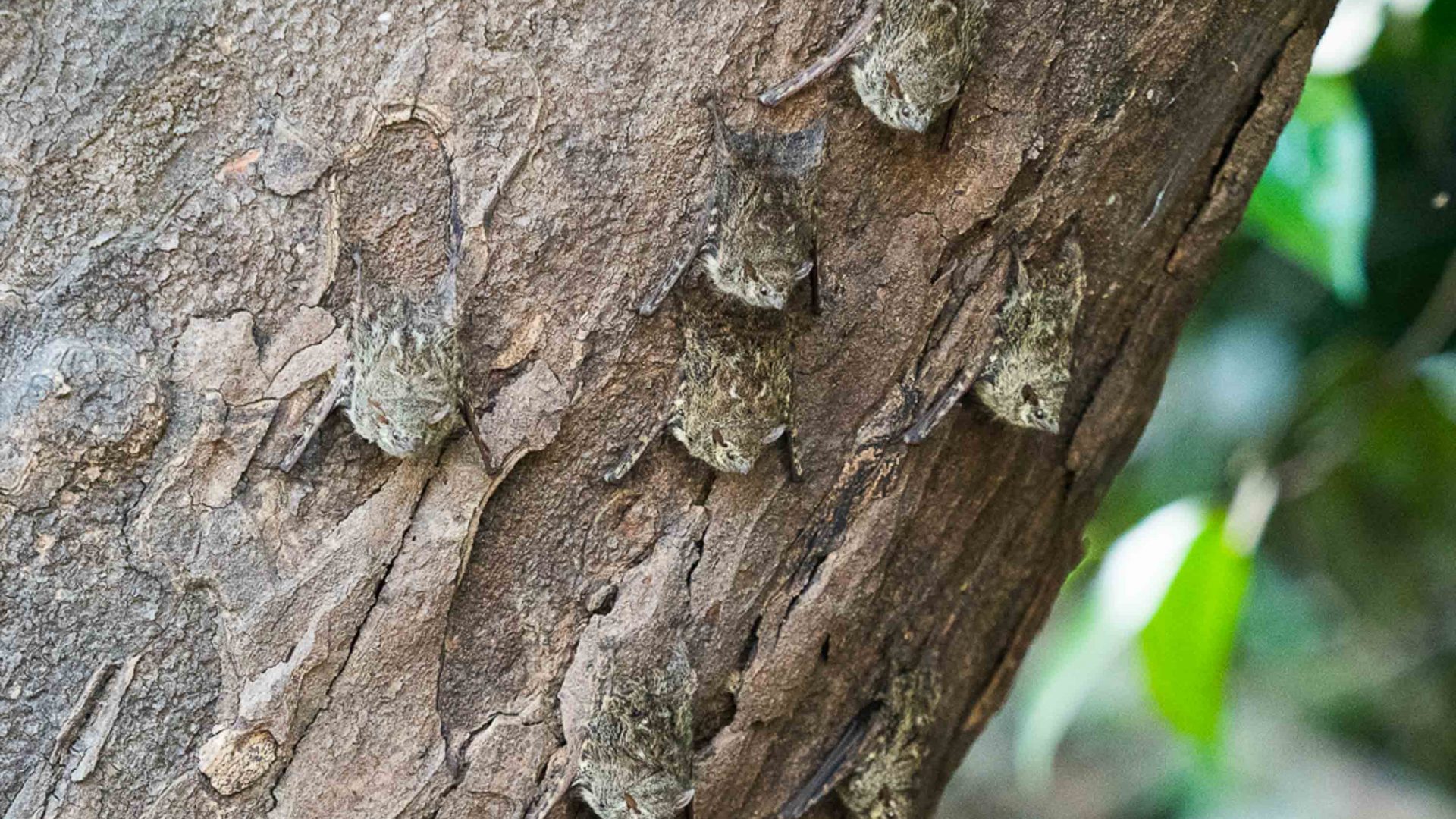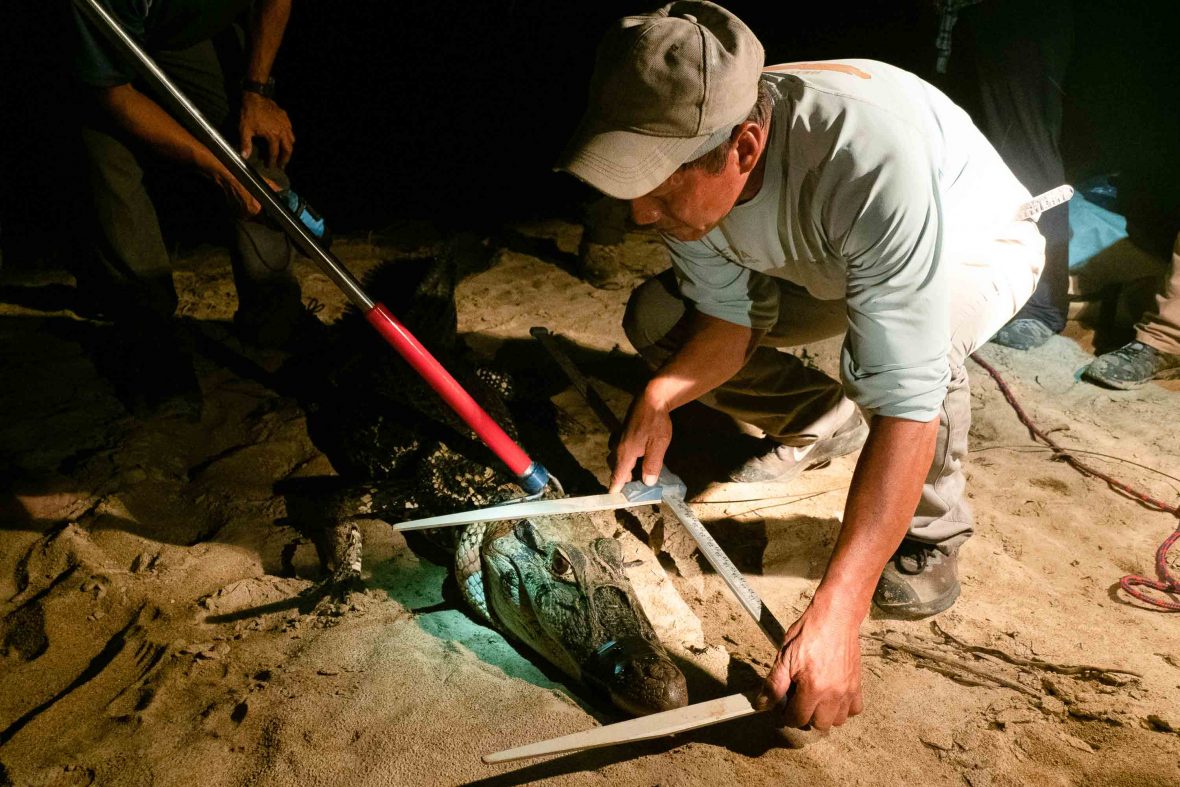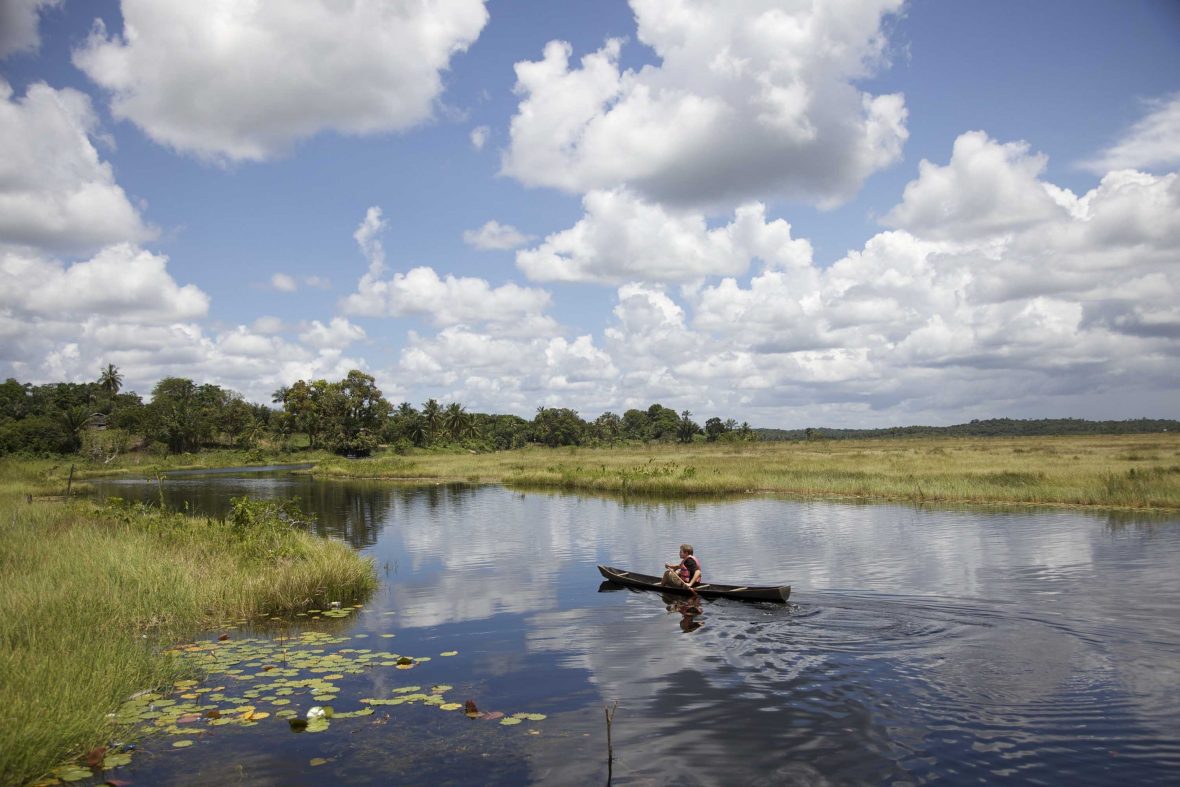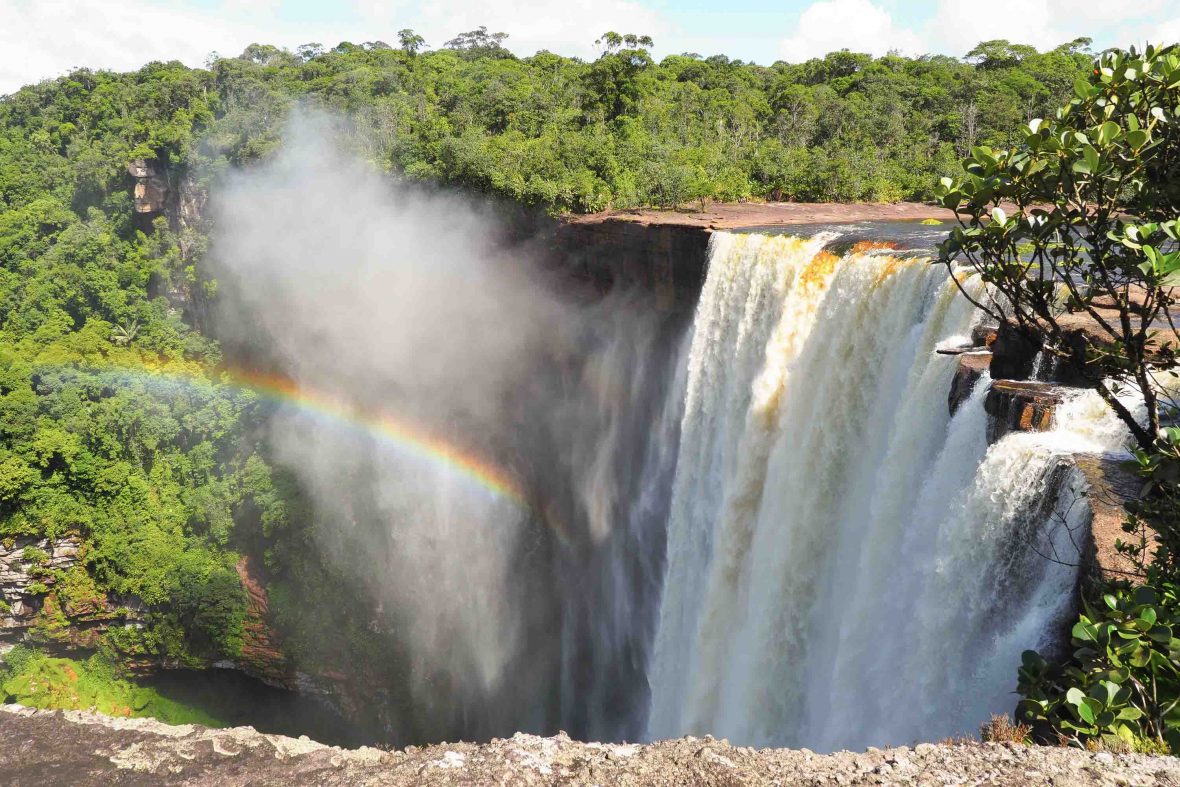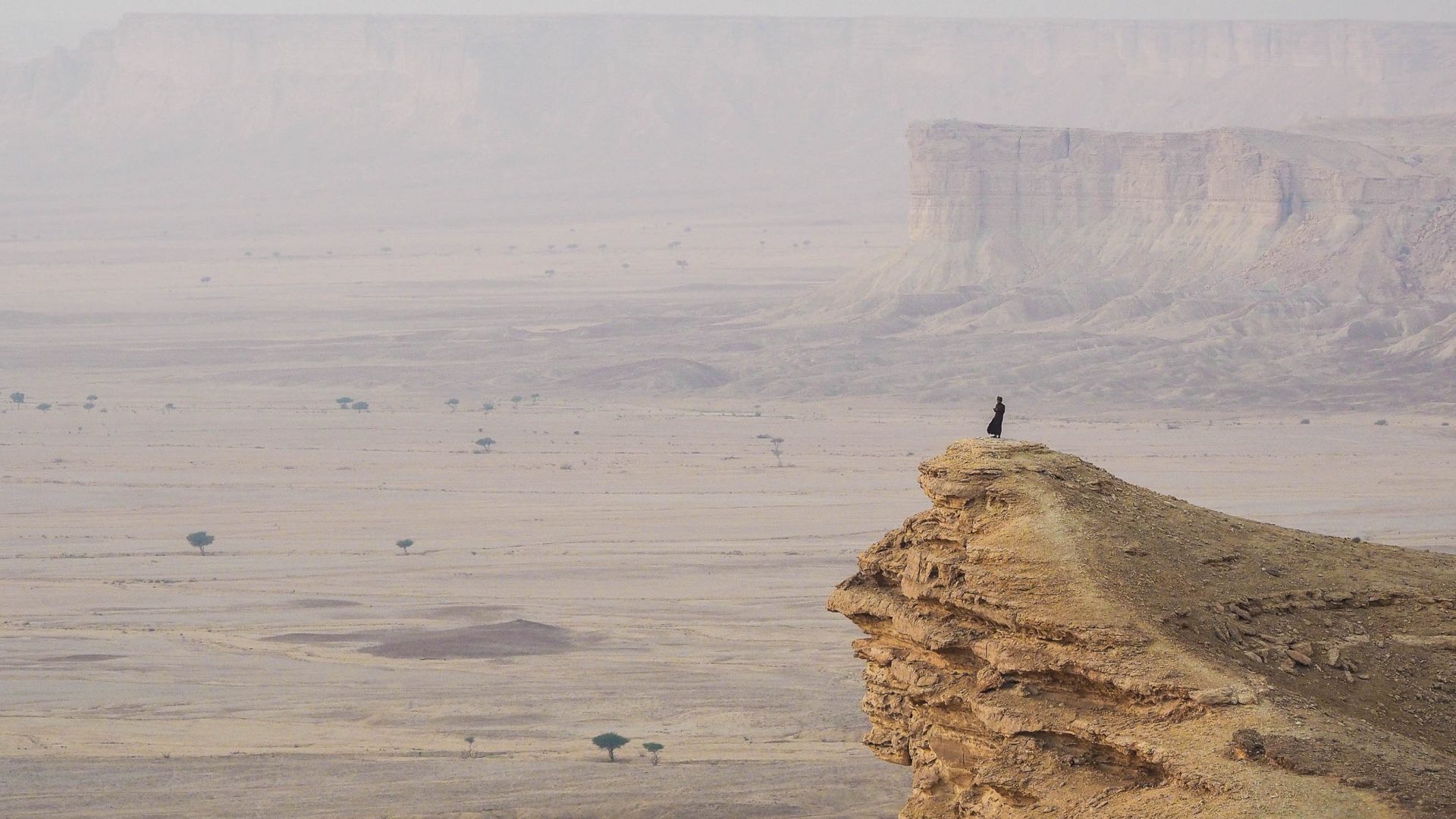
Editor’s note: This article was published before the coronavirus pandemic, and may not reflect the current situation on the ground.
Guyana has been bagging ecotourism awards the world over. But as the former British colony begins to exploit its vast oil reserves, are its unique tourism draws under threat? Sarah Reid heads to South America to find out.
Bouncing across the North Rupununi savannah in a beaten-up 4WD, dodging termite mounds glowing gold in the early morning sun, my groggy eyes rest on the form of a lone vaquero (Guyanese cowboy) ahead of us, gesturing to a nearby patch of shrubbery.
“He’s found one,” our guide Manuel ‘Manny’ Mandook beams, before hitting the breaks. Piling out of the vehicle and silently creeping closer, we take turns peering at the unusual creature dozing in the long grass. A giant anteater!
I’m already impressed, but then the huge mammal—also known as an ant bear—springs to its feet and begins snuffling around. Between its poor eyesight and the breeze masking our scent, we’re able to observe it lapping up unsuspecting ants with rapid-fire flicks of its sinuous pink tongue from just meters away. It’s next-level wildlife-watching, and there are no other tourists for miles.


